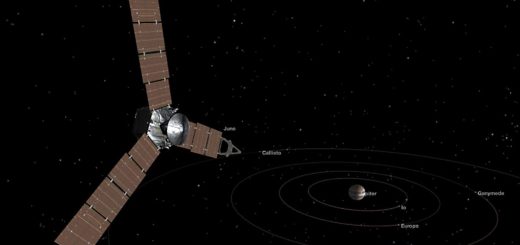Milky Way’s Galaxies Are Not What They Seem – We Are All Extragalactic Immigrants – Study Shows
It’s now evident that our Milky Way is not quite what we previously thought.
Astronomers have discovered that half of the Milky Way comes from another distant region of space.
A new study reveals that Up to half of the matter in our Milky Way galaxy may come from distant galaxies and each one of us may be made in part from extragalactic matter.

Using supercomputer simulations, astrophysicists from Northwestern University discovered an unexpected mode for how galaxies acquired matter: intergalactic transfer. Supernova explosions eject copious amounts of gas from galaxies, causing atoms to be transported from one galaxy to another via powerful galactic winds.
The simulations show that supernova explosions eject copious amounts of gas from galaxies, which causes atoms to be transported from one galaxy to another via powerful galactic winds. Intergalactic transfer is a newly identified phenomenon, which simulations indicate will be critical for understanding how galaxies evolve.
“Given how much of the matter out of which we formed may have come from other galaxies, we could consider ourselves space travelers or extragalactic immigrants,” said Daniel Anglés-Alcázar, a postdoctoral fellow in Northwestern’s astrophysics center, CIERA (Center for Interdisciplinary Exploration and Research in Astrophysics), who led the study. “It is likely that much of the Milky Way’s matter was in other galaxies before it was kicked out by a powerful wind, traveled across intergalactic space and eventually found its new home in the Milky Way.”
Galaxies are far apart from each other, so even though galactic winds propagate at several hundred kilometers per second, this process occurred over several billion years.
“Up to one-half of the atoms around us, including in the solar system, on Earth and in each one of us comes not from our own galaxy but from other galaxies, up to one million light years away,” Faucher-Giguère, a co-author of the study and assistant professor of physics and astronomy in the Weinberg College of Arts and Sciences said.
By tracking in detail the complex flows of matter in the simulations, the research team found that gas flows from smaller galaxies to larger galaxies, such as the Milky Way, where the gas forms stars. This transfer of mass through galactic winds can account for up to 50 percent of matter in the larger galaxies.
“In our simulations, we were able to trace the origins of stars in Milky Way-like galaxies and determine if the star formed from matter endemic to the galaxy itself or if it formed instead from gas previously contained in another galaxy,” said Anglés-Alcázar, the study’s corresponding author.
In a galaxy, stars are bound together: a large collection of stars orbiting a common center of mass. After the Big Bang 14 billion years ago, the universe was filled with a uniform gas — no stars, no galaxies. But there were tiny perturbations in the gas, and these started to grow by force of gravity, eventually forming stars and galaxies. After galaxies formed, each had its own identity.
“Our origins are much less local than we previously thought,” Faucher-Giguère said. “This study gives us a sense of how things around us are connected to distant objects in the sky.”



 Creators of mankind
Creators of mankind Description of “Tall white aliens”
Description of “Tall white aliens” Where they came from?
Where they came from? About hostile civilizations
About hostile civilizations The war for the Earth
The war for the Earth “Tall white aliens” about eternal life
“Tall white aliens” about eternal life Video: “Nordic aliens”
Video: “Nordic aliens” Aliens
Aliens Alien encounters
Alien encounters The aliens base
The aliens base UFO
UFO Technology UFO
Technology UFO Underground civilization
Underground civilization Ancient alien artifacts
Ancient alien artifacts Military and UFO
Military and UFO Mysteries and hypotheses
Mysteries and hypotheses Scientific facts
Scientific facts


















